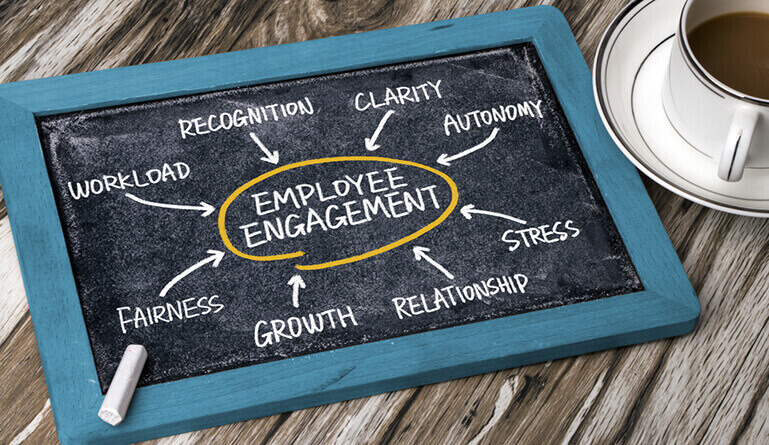Guest Contribution by Ross Swan
Technology has changed the face and structure of business in the past two decades. It has disrupted a critical domain. That of the relationship between an employer and an employee.
Technology is changing human behaviour. How we deal with every moment of our lives now is an output of the 24X7 connected lifestyle we live.
With five or more generations at the workplace, diversity and inclusivity have become must-haves to ensure there is a collaborative pool of ideas to create business growth. Productivity has a new face in the form of employee wellness and happiness.
All of which come under the umbrella of employee engagement.
Driven by leadership.
It has created a test for and of leadership in being able to drive employee engagement. In the evolving workplace of today leadership is the most important success factor in creating great employee engagement.
Leadership and employee engagement are common to any and every business, irrespective of size, globally. The commonality is that the engagement figures are poor all across.
Whilst technology marches through replacing process work and, in some cases assisting critical thinking, the need for a human interface to feel appreciated and valued is on the rise. For leaders this creates the necessity of being adept at the soft skills of empathy, creative thinking, listening and applying high emotional intelligence in driving people together to create buy-in for a common purpose.
Great engagement is engraved by leadership behaviour, the values of the business and its processes and systems.
There’s a very high impact of authentic leadership behaviour coupled with creating a conducive environment in driving organizational development. When these two foundation blocks are in place then communication comes in.
There needs to be great leadership to create effective communication. Communication that provides clarity of vision. Articulating clearly the benefit, the employee gets, in working towards achieving the vision.
This is a responsibility that lies squarely on the shoulders of leadership. Having engaged employees involves creating a strong common connection. It is up to the leaders to connect with their people. As a leader, if one is unable to create that connection it’s just spouting mere words that are taken as being hot air. On the contrary, if leaders act and communicate in cohesion it attracts the attention of the employees and creates common interests which start the engagement process.
The engagement process is an experience that the employee feels. In other words, it is also known as employee experience.
It is what people really experience within the workplace that matters. Having a holistic approach to see what the key need areas of the organizational structure, processes and leadership development lead are in creating a good work experience is essential.
Why is the employee experience important?
To be effective businesses today rely heavily on the behaviour of their employees than in the past. The disruption technology has created in the employer and employee relationship urges us to unlock new sources of value. To identify and achieve those significant improvements are needed very quickly.
The technological transformation occurring has created an organizational revolution in the form of creating autonomously functional teams that work with agility and have a very fast pace of exploring problems, delivering solutions through quick iterations. In such a work environment, the existing work models need a huge shift from the past.
With generational diversity in the workplace the expectations, of and from the workplace, has undergone major changes. With societal behaviour changing the historical organizational structures don’t work anymore. Resulting in a pressing need for new structures.
A fall-out of this change is on leadership. Today there is no place for the command and control model of leadership. The role of the manager today has evolved to provide context to the work not the content of the work.
It’s the human aspect. It’s the behaviours that matter.
Unfortunately, organizations have not yet quite translated what this shift really means in terms of operations. This shift drastically changes how things are being done.
This impact how organizations plan their leadership development.
Whilst behaviour matters most and yet at the same time data is so easily available and accessible it has changed the way learning is done. Courses are now available everywhere and allow for learning from anywhere.
Learning is no longer the objective of leadership development. It is more about the growth that one, as a leader, can ensure for employees.
The growth for employees become the central point of leadership behaviour. It fuses with business growth and organizational development to be moulded as one core objective. That focuses on how the team will enable the employee for success.
Leadership then becomes all about asking questions to elicit knowledge and craft actions. Questions such as:
- What are the enabling factors?
- Does the workplace include or offer challenges to the employee in order for him or her to put their skills into practice?
- Does it include clear values for the work?
- Does it include constructive and unbiased and authentic feedback?
- Does it include encouragement to help the employee try new things?
- Does it include respect for the employee and his or she believes and what the employee may have to say?
This is what leadership development looks at today given how the younger generations are honest and straight-forward. They vote with their feet if they are unhappy. What happens with voting with your feet is that if leadership is not performing then all the good people leave. They leave because they can get another job and what’s left, as a talent pool, are people who can’t get another job. So basically, the organization ends up with a less skilled workforce.
Given the generational diversity, such change creates a lot of frustration and leadership crises. This turmoil of change does not allow to provide the content of work but the context and that requires a behaviour change. Which is a huge shift behaviourally? It demands an upfront ability to cope with such change.
Coaching helps a lot in supporting behavioural development. Yet it is not enough. There needs to be processes, systems and structures in place to enthuse all. As well has created clarity in communication and vision as everyone needs and wants to know what the real value is expected from them through their work role.
Having these in place creates a common language within teams and within the organization. Organizations are realising that having their core value statement on the walls is no longer doing the job. It needs to be in leadership behaviour in order to impact the work culture.
All of these need to work together in order for the music to flow in creating effective employee engagement.
***
 Ross Swan is a perceptive, responsive, and accessible consultant, coach and trainer, with broad experience in varied industries worldwide, including financial services, construction, energy, logistics, distribution, retail, engineering, hospitality, airlines, and manufacturing. He is highly regarded for his proactive methods to capture and integrate employees’ engagement with the corporate vision.
Ross Swan is a perceptive, responsive, and accessible consultant, coach and trainer, with broad experience in varied industries worldwide, including financial services, construction, energy, logistics, distribution, retail, engineering, hospitality, airlines, and manufacturing. He is highly regarded for his proactive methods to capture and integrate employees’ engagement with the corporate vision.
Ross is also a dynamic speaker with outstanding skills in leadership, communication, presentation, training, team-building, and interpersonal relations. He works internationally, spanning a variety of industries around the globe with his projects encompassing a large diversity of cultural backgrounds.




